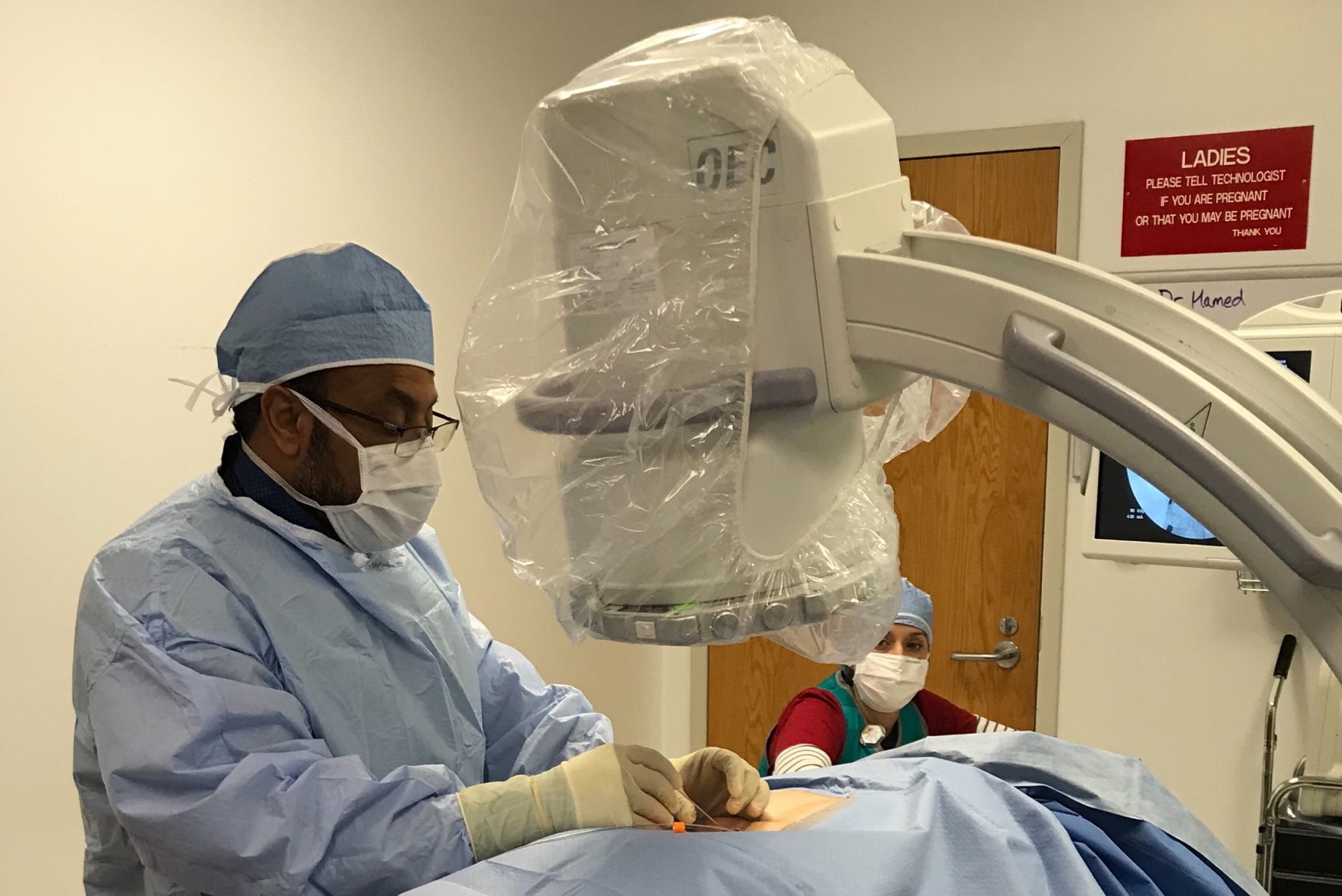Q. What is the difference between acute and chronic pain?
Acute pain is mild or severe pain that last for a few weeks or months. It occurs due to surgery, an illness or injury. Chronic pain is persistent ongoing pain. This pain affects a specific area of the body, such as the neck, lower back, head, as well as neuropathic or musculoskeletal pain. The pain may be due to illness. Chronic pain can lead to disability, depression and reduced quality of life. Treatment for acute and chronic pain varies depending on its severity. Common pain relievers, such as NSAIDS and acetaminophen may not relieve chronic pain. If that is the case, physical therapy, nerve blocks, surgery and even alternative treatment options may bring long-term relief.
Q. What conditions cause chronic pain?
Fibromyalgia, low-back pain, headaches, migraines, arthritis, carpal tunnel syndrome and sports injuries are a few conditions that can cause long-term pain.
Q. What is a Physiatrist?
Physiatrists are experienced in treating illness and/or injuries that affect the muscles, nerves and bones. These doctors must receive a medical degree and complete training in physical medicine and rehabilitation. Physiatrists are able to identify the cause of pain and recommend treatment options to bring you relief.
Q. When should I see a physiatrist?
Often we view pain management as a last resort. You know your body. Keep track of the type of pain you are experiencing and how often you are in pain. If your pain persists for weeks or months and conventional methods have not worked, you should see a physiatrist.
Q. What should I expect at my first visit?
During your first visit, your doctor will complete a thorough physical exam. Please be prepared to discuss your medical history and symptoms. If your primary physician has taken any X-rays or other tests, please request that they be sent to our office prior to your visit. These can help your doctor diagnose your condition and establish a treatment that best meets your needs.
Q. What payments options are available?
We accept checks and all major credit cards. Payment is due at the time of treatment. If you need to make payment arrangements, please speak with our financial coordinator. Most insurance policies provide coverage for pain management services. As a courtesy, our office does file insurance claims. We will make every effort to ensure you receive the maximum benefit your plan allows. Please remember that you are responsible for any fees not paid by your insurance.
Q. What is arthritis?
Arthritis actually refers to a family of illnesses that cause joint pain, redness, swelling, stiffness and decreased range of motion. These symptoms usually get worse with age. Severe arthritis can make it hard for you to complete daily tasks. Rheumatoid arthritis (RA) and Osteoarthritis (OA) are the most common types of arthritis.
Q. What is Fibromyalgia?
Fibromyalgia is widespread musculoskeletal pain. This condition can develop because of physical trauma, infection, surgery or severe emotional stress. Many people who have fibromyalgia also experience fatigue, anxiety, depression, temporomandibular joint (TMJ) disorders, tension headaches and irritable bowel syndrome.
Q. What is Carpal Tunnel Syndrome?
Carpal Tunnel Syndrome is a common nerve disorder that occurs because the median nerve (runs from the forearm to the wrist), becomes compressed or irritated. Symptoms include: a numbing or tingling feeling in the hands or fingers, hand weakness or pain that radiates from the wrist to the arm and shoulder, or down to the palms or fingers.
Q. What medications are typically used to treat pain?
Common medications include topical creams, ointments or gels and over-the-counter pain relievers, such as Tylenol and Ibuprofen. Narcotic pain medicines can be prescribed for severe pain. Muscle relaxants and anti-depressants can also be prescribed, but only as a last resort.
Q. What other treatment options are available?
Other treatment options include trigger point injections, nerve blocks and epidural steroid injections. Physical therapy can also be effective, but only under a trained physical therapist. Acupuncture can effectively treat many types of disorders.
Common Chronic Pain Syndromes
Chronic Pain Syndrome (CPS) is a group of conditions that cause a persistent pain that does not seem responsive to conventional medical treatment. Any pain that lasts longer than three months is considered chronic, which may be the result of a chronic pain syndrome.
Common Chronic Pain Syndromes include:
- Fibromyalgia
- Lower Back Pain
- Headaches/Migraines
- Arthritis
- Carpal Tunnel Syndrome
- Sports Injuries
Spinal Cord Stimulator
If you are suffering from chronic leg or arm pain, and have not found relief through traditional medical treatments, a spinal cord stimulator may be a suitable option for you. A spinal cord stimulator is surgically placed under the skin. It contains a small pulse generator that sends a mild electric current to the spinal cord to block the feeling of pain. The stimulation is similar to a mild tingling sensation. This device helps you to better cope with your pain, and may reduce the amount of pain medication you take.
Epidural Steroid Injection
For some, physical therapy, chiropractic care and even medication therapy aren’t effective in fully relieving the symptoms of chronic pain syndromes. In addition to some of these other treatment methods, injection therapy may also be used to help treat chronic and acute back pain and hip or shoulder pain.

